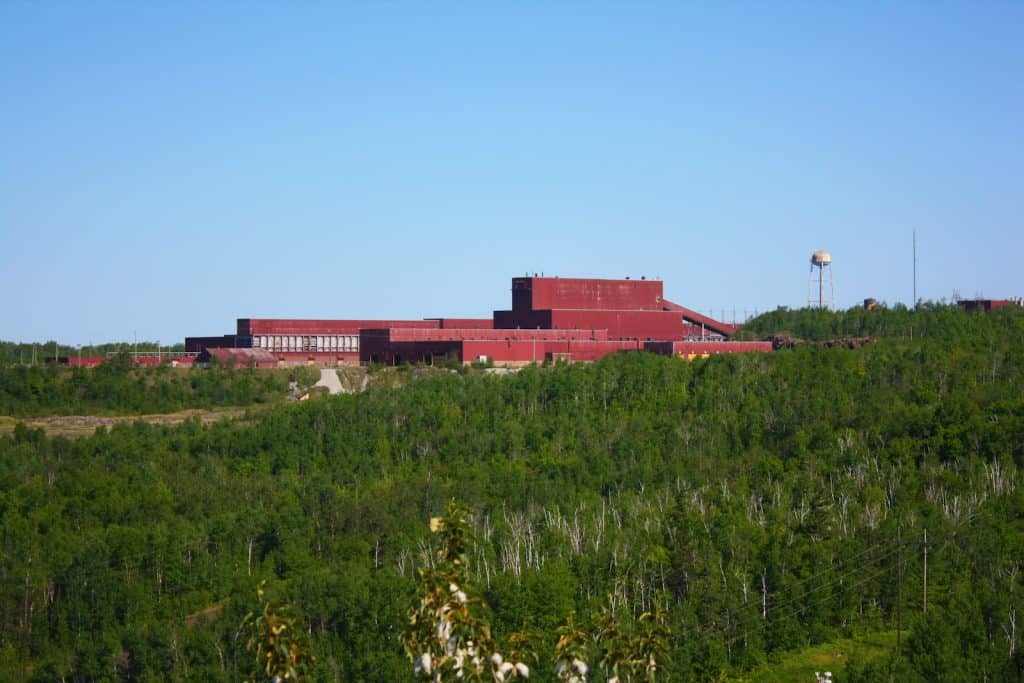
PolyMet Mining Corp.’s controversial copper-nickel mine proposal in the headwaters of the St. Louis River has received critical permits from the Minnesota Department of Natural Resources. DNR commissioner Tom Landwehr made the announcement at noon today.
The mine has been in the proposal and environmental review stage for more than 10 years. A final Environmental Impact Statement was deemed adequate by the state in March 2016, at which point the company started applying for permits.
Today, the DNR said it would issue the key permit to mine, as well as six water appropriation permits, two dam safety permits, a public waters work permit, and an endangered species takings permit.
“Based on the DNR’s review, we are confident that the project can be built, operated, and reclaimed in compliance with Minnesota’s rigorous environmental standards, which are designed to protect human health and the environment,” DNR commissioner Tom Landwehr said. “This does not mean that the project will not have impacts, but it does mean that the project meets Minnesota’s regulatory standards for these permits.”
Mine moves forward
The announcement was great news for PolyMet, which has already invested tens of millions dollars in the project. Much of the money came from Glencore, a Swiss-based conglomerate that controls commodities around the globe.
PolyMet’s stock price began rising as soon as the announcement was made, closing the day about 25 percent higher than it started in the morning.
“We look forward to building and operating a modern mine and developing the minerals that sustain and enhance our modern world,” said Jon Cherry, PolyMet’s president and CEO. “Responsibly developing these strategic minerals in compliance with these permits while protecting Minnesota’s natural resources is our top priority as we move forward.”
The permit to mine includes information about financial assurance, the “damage deposit” that the company will be required to pay the state. It would cover closure and clean-up of the mine if the company goes bankrupt or otherwise tries to walk away from its responsibilities.
The project is expected to require at least 500 years of water treatment to prevent pollution of the Embarrass and Partridge Rivers, tributaries of the St. Louis. According to the DNR, PolyMet has already paid $74 million to cover the construction phase, which will take about two years. Because anticipated clean-up and closure costs will shift over time as the mine grows, the DNR says it will require approximately $588 million at the start of mining and, at its peak, approximately $1 billion.
Quick criticism
Environmental groups and clean water advocates criticized the decision, saying approval opens the door for the company to greatly expand the size of the mine. The Minnesota Center for Environmental Advocacy had requested a “contested case hearing,” an independent judicial review, which the DNR rejected.
The organization also said PolyMet has already indicated to investors that it hopes to nearly triple the size of the mine. MCEA claims the company is trying to pull a “bait and switch,” by securing permits now and coming back later for permission to expand. At that point, with the mine operating, environmentalists believe it will be politically difficult for regulators to reject the request at the risk of shutting the mine down.
Earlier this year, PolyMet issued an updated feasibility report for the mine that showed it would be less profitable than previously predicted, unless it mined more material, at a faster rate.
“PolyMet’s financial study released in March clearly shows the version of the mine the DNR has reviewed will never be built,” MCEA’s executive director Kathryn Hoffman said. “If a mine is built on the site, it will be a mega-mine described in that financial study that the DNR has refused to review. The risks of that mega-mine are even greater to Minnesotans’ health and Minnesota’s water.”
Duluth citizens who are concerned the mine could contaminate their community have organized in a group called Duluth for Clean Water. They say they’re disappointed by the decision, but vowed to continue their opposition.
“The permits issued today do not change our approach, which is to tell the truth and demand that regulators and politicians protect Minnesota. We will continue to fight this reckless proposal with our allies, including by supporting needed legal challenges. Minnesota cannot afford this mine.”
The project still needs water and air quality permits from the Minnesota Pollution Control Agency and a wetlands permit from the Army Corps of Engineers. But the permit to mine and other DNR permits issued today were seen as the most significant hurdle facing the company.

